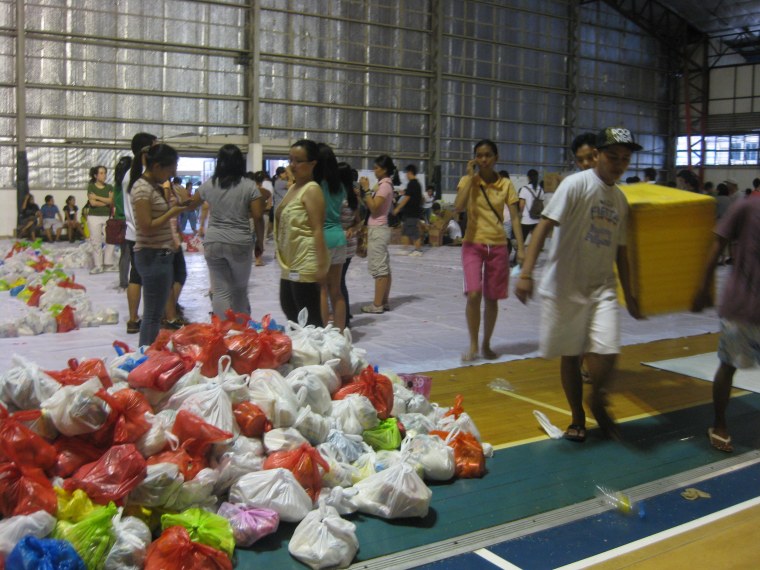I'm not the volunteering type. The Philippines has seen its share of natural disasters, but my role in any relief effort used to be limited to packing old clothes to have them picked up by a charity, never to see where they go or what happens to my contribution.
When I first heard about Tropical Storm Ondoy (known internationally as Ketsana), I was on a weekend beach trip with some friends and took note of the typhoon only as a travel-related inconvenience. About 24 hours later, we were glued to the television as the news broke the first video and photos of the devastating flood. We were all on our phones and PDAs, using the hotel's wi-fi to see what everyone back home was going through.
I had seen my share of floods living in Makati City, but it hadn't been a problem in my neighborhood in recent years. Because of this, I've become complacent though still aware that I have to keep important items (documents and electronics) at least six inches off the ground. Just in case. But that did not prepare me, my family, and my friends, for the flood that Ondoy brought down on our homes. Filipinos measure floods by how high it goes up your body. My room was almost knee-deep in water. An uncle had to wade in chest-deep water to get back home. For many friends, the flood was "lampas tao" or past a person. The waters went over their heads, and they were forced to retreat to the house's second floor, or the roof, or a neighbor's roof.
By all their accounts, it happened too quickly. Some could only grab absolute essentials (phones, laptops), and others only had time to escape with their lives (only to battle the current once they survived drowning in their own homes). And then there were others (over 200 as of last count) who weren't as fortunate.
My travel companions and I happened to be far enough from Manila that we were able to keep ourselves updated the whole time. We never lost power, unlike many in the affected areas, and were able to watch the news coveragen. We were able to recharge our mobile phones, and relay messages on behalf of people whose phones had gone out after the first day. Our friends were furiously updating their Facebook profiles, Twitter pages, and blogs, and within minutes we were seeing new photos, new stories, new calls for help, and new ways to take action. Soon we could donate to disaster relief centers and the Philippine National Red Cross through bank deposits, Paypal, credit cards and our cellphones.
Volunteering around Manila
When I returned to Manila, I spent most of my day volunteering to compensate for not being in town when I was needed the most. Friends who had been to various relief centers on day one posted about grocery items that were needed, and I made a trip to the supermarket to get supplies (where the lines were extraordinarily long for a Tuesday morning). I found out from a friend on Facebook about a center that needed an extra hand, so I just showed up. Dozens of college students, whose classes were suspended that day, had the same idea. Together we sorted clothes, loaded bags of rice, noodles and canned goods onto trucks headed for Cainta, one of the most devastated areas. We had to load the truck quickly because the families had to get the food before dark. (This particular community still didn't have power.)
Now I know what happens to my donations. I even have faces to associate with the often anonymous flood victims, though many of those faces are friends and family members. I wasn't the volunteering type, but the online updates from my friends about how they've helped their communities is encouraging me to do the same. The local term for this kind of collective effort is "bayanihan" but now our individual acts are tied together by status updates and shared photos. The helplessness in the face of this disaster is still there, but it's easier to do something about it now.
As the waters start to subside, a lot of people will be returning to the muddy, filthy shells that used to be their homes. They need all the friends — online and otherwise — that they can get.
Mina V. Esguerra is an editor and communications consultant based in Manila, Philippines. Since writing this, she has worked at another relief center, and was inspired even more by the skill and spirit of the young Filipinos she volunteered with.
